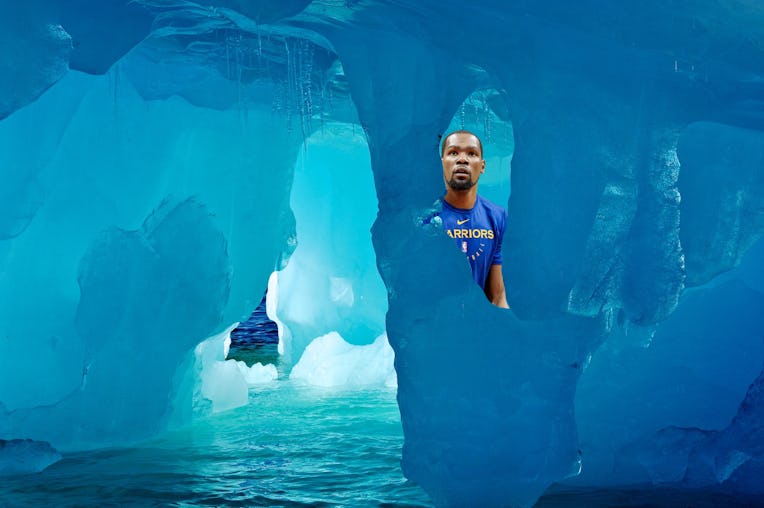Worst Lede of Last Month: Kevin Durant Doesn’t Care About This Glacier
You telling me that just took me down a deep hole

Welcome to WORST LEDE OF [INSERT TIME PERIOD HERE], a semi-regular series on bad ledes.
June 2, 2021: “Kevin Durant and (Possibly) the Greatest Basketball Team of All Time,” New York Times Magazine
This sprawling feature, on Durant’s career at the Brooklyn Nets, clocks in at nearly 10,000 words. However, one must make it through approximately 400 words’ worth of authorial manspreading before we actually get to the reason we’re reading to profile in the first place (to learn about KD’s tweets).
The lede, like someone who graduated from Harvard, is VERY pleased with itself. Here is how it begins.
Ok, why not, let’s start with the asteroid. Thirty-five million years ago, a giant space rock, two miles wide, came screaming out of the sky and crashed into Earth. It struck the eastern edge of the landmass we know today as North America. And it unleashed an apocalypse. The asteroid hit with the power of many nuclear bombs. It hit so hard that it vaporized itself and cracked the bedrock seven miles down. It incinerated whole forests, killed all life in the area, sent super-tsunamis ripping out across the Atlantic. You can still find remnants of the trauma (shocked quartz, fused glass) as far away as Texas and the Caribbean.
Where it hit, the rock left a scar: a giant smoldering hole more than 50 miles across.
What?
Eons passed. The world turned cold. Glaciers started crawling down from the north, with irresistible slowness, inching their way toward the asteroid hole, grinding up the landscape, dragging boulders and carving valleys. Then they stopped. They started to melt. The glaciers bled ice water, and little trickles went rolling downhill, braiding themselves into rivers, seeking low places in the landscape.
Eventually, inevitably, the water found the asteroid hole. The ancient crater sucked down streams like a shower drain. It flooded and overflowed, expanding its borders, mingling freshwater and seawater, filling up with creatures of all kinds: oysters, fishes, turtles, dolphins, otters, pelicans, newts. Little blue crabs scuttled through its grasses.
Why is this happening? Kevin? Where are you, Kevin? Are you trapped under a glacier of prose? Do you need help!! Kevin give us a sign!
Today we call that waterlogged space-hole the Chesapeake Bay. It is the largest estuary in the United States, a jackpot of fertility, home now to more than 18 million people — and for 400 years it has been a vortex of American history: Jamestown, revolution, tobacco, the Underground Railroad. Frederick Douglass used to watch sails gliding across the Chesapeake Bay and dream of being free.
Okay, let me try to be charitable. Maybe this is a good geology/history lesson. This article is actually an interdisciplinary education: geology, history, Kevin Durant, and how not to write a lede.
I could tell you about that asteroid hole forever.
Please God… no…
But the reason I am telling you now is that Kevin Durant, the basketball superstar, grew up next to it — so close that he can tell you how many blue crabs come in a bushel. On a recent afternoon, when the Brooklyn Nets had a day off, I told Durant the story of the asteroid and the glaciers and the formation of the Chesapeake Bay.
Oh thank freakin God Kevin I was so worried you were trapped under a million-year-old sheath of ice and would never play basketball again. I’m sure you’re wondering, since this is a profile of Kevin, after all, what he might think of the story the author just shared with us:
“That’s incredible,” he said [...] “Sick,” he said admiringly. “That’s sick.” And: “That’s a message to me. You telling me that just took me down a deep hole.”
There’s a non-zero chance those are just the polite words to reach for when someone has trapped you in a conversation in which they take it upon themselves to teach you everything they know about the local estuary. But okay, sure, let’s allow the possibility that maybe KD really did find the asteroid hole lesson incredible. Maybe it actually was sick. You know what I find incredible? That this little spiel made it into the published piece, let alone the lede. Is there room under that glacier?